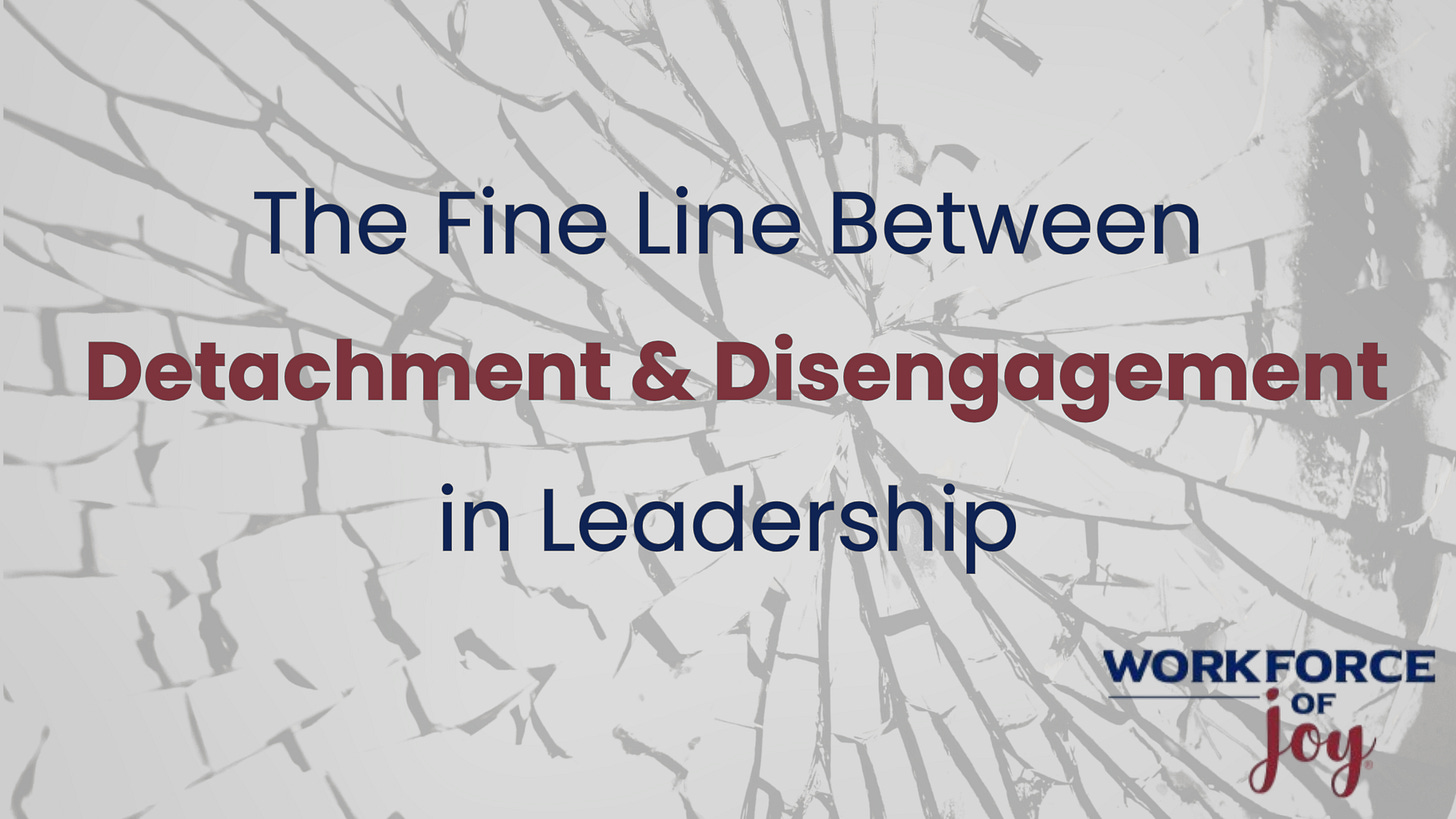Leadership is a balancing act. We care deeply about our work, our teams, and our goals—but if we tie our sense of success to outcomes we can’t fully control, we set ourselves up for frustration, burnout, and reactive decision-making. The most effective leaders understand the power of detachment—not from their work, but from the outcomes of their efforts.
Detachment is not about indifference. It is about maintaining focus on the process rather than fixating on results. When we detach from outcomes, we gain clarity, make better decisions, and create an environment where learning and growth thrive. The challenge is ensuring that detachment doesn’t slip into disengagement.
My Early Struggle with Disengagement
I learned this lesson the hard way. Early in my leadership journey, I had a project that I was deeply invested in—one I believed could make a real difference. I poured everything into it, certain that if I worked hard enough, the outcome would reflect my effort. But despite my preparation and commitment, things didn’t go as planned. The initiative struggled to gain traction, key stakeholders weren’t as enthusiastic as I’d hoped, and I felt like I was constantly hitting walls.
Eventually, I hit a breaking point. I started checking out—not just from the project, but from the work altogether. I convinced myself that if no one else cared, why should I? I still showed up, still went through the motions, but my energy was gone. My team noticed. Instead of being the leader they could look to for direction, I became another person waiting to see what would happen next. That was disengagement. I had let the outcome dictate my level of effort, and in doing so, I had abandoned my responsibility as a leader.
Evolving into Detachment
Years later, I found myself leading another high-stakes initiative. But this time, I approached it differently. Instead of focusing on whether it would be a “win” or a “loss,” I focused on the process. I set clear goals, communicated expectations, and ensured my team had the tools and support they needed. And most importantly, I reminded myself daily: I cannot control the final outcome, but I can control how I show up every day.
This shift changed everything. I remained engaged, steady, and present—not because I was certain of success, but because I was committed to the work itself. When challenges came up, I didn’t spiral into frustration or withdrawal. Instead, I adapted. I stayed engaged with my team, adjusted the strategy where needed, and accepted setbacks as part of the process rather than personal failures.
That project didn’t go perfectly either. But this time, I wasn’t crushed by the outcome. I walked away knowing I had led with intention, clarity, and resilience. And that was success.
Detachment: Owning the Process, Releasing the Outcome
Leaders often fall into the trap of believing that if they just work harder, push more, or control every variable, they can guarantee success. But leadership—like life—is full of variables beyond our control. Market shifts, team dynamics, client decisions, and unexpected obstacles all play a role in shaping results.
True detachment means focusing on what we can control: the effort we put in, the strategies we use, the conversations we have, and the way we respond to challenges. It means measuring success not by whether an outcome goes our way, but by whether we approached it with intention, discipline, and adaptability.
A leader practicing detachment might say:
• “I can’t control whether this project gets approved, but I can ensure we present a strong, well-researched proposal.”
• “I can’t force my team to embrace a new process immediately, but I can provide the support, training, and patience they need to get there.”
• “I can’t control how my idea is received in a meeting, but I can control how I communicate it—with clarity, confidence, and openness to feedback.”
Disengagement: Letting Go of Both Outcome and Effort
Detachment is about releasing the result. Disengagement, however, is about releasing the responsibility. When a leader disengages, they stop putting in the effort. They pull back—not just from the outcome, but from the process itself.
Disengaged leaders avoid difficult conversations, lose curiosity, and allow obstacles to dictate their level of involvement. Their teams feel the absence, sensing a lack of direction and support. Where detachment provides clarity and steadiness, disengagement creates confusion and inertia.
A disengaged leader might say:
• “This project probably won’t get approved, so why bother putting in extra effort?”
• “My team isn’t responding well to this change—let’s just see what happens.”
• “No one listens to my ideas anyway, so I’ll keep my thoughts to myself.”
Leading with Detachment, Not Disengagement
To walk the fine line between detachment and disengagement, focus on these key practices:
1. Control the Controllables – Put your energy into preparation, effort, and execution. Acknowledge that external factors will play a role, but don’t let them dictate your commitment to the process.
2. Redefine Success – Instead of defining success solely by outcomes, measure it by progress, effort, and learning. Ask: Did we give our best effort? Did we adapt where needed? Did we stay true to our values and principles?
3. Stay Engaged with Your Team – Detachment doesn’t mean stepping away from leadership. Stay present, offer guidance, and support your team through challenges—even when things don’t go as planned.
4. Embrace Setbacks as Data, Not Defeat – When outcomes don’t align with expectations, use them as learning opportunities. Instead of feeling frustration over what didn’t happen, analyze what did happen and what can be improved.
5. Balance Confidence with Flexibility – A leader who is detached from outcomes can be confident in their direction while remaining open to adjustments. They don’t let unexpected results shake their foundation, but they also don’t ignore new information.
The Workforce of Joy
A Workforce of Joy is not one where leaders obsess over every outcome, nor is it one where they disengage and let circumstances dictate the future. It is one where people are encouraged to give their best effort, refine their approach, and embrace challenges with resilience—knowing that their work matters, regardless of external results.
The best leaders understand that their role is to guide the process, not control the outcome. They show up, do the work, and lead with clarity—knowing that success is not about guaranteeing results but about how well they navigate the journey.




